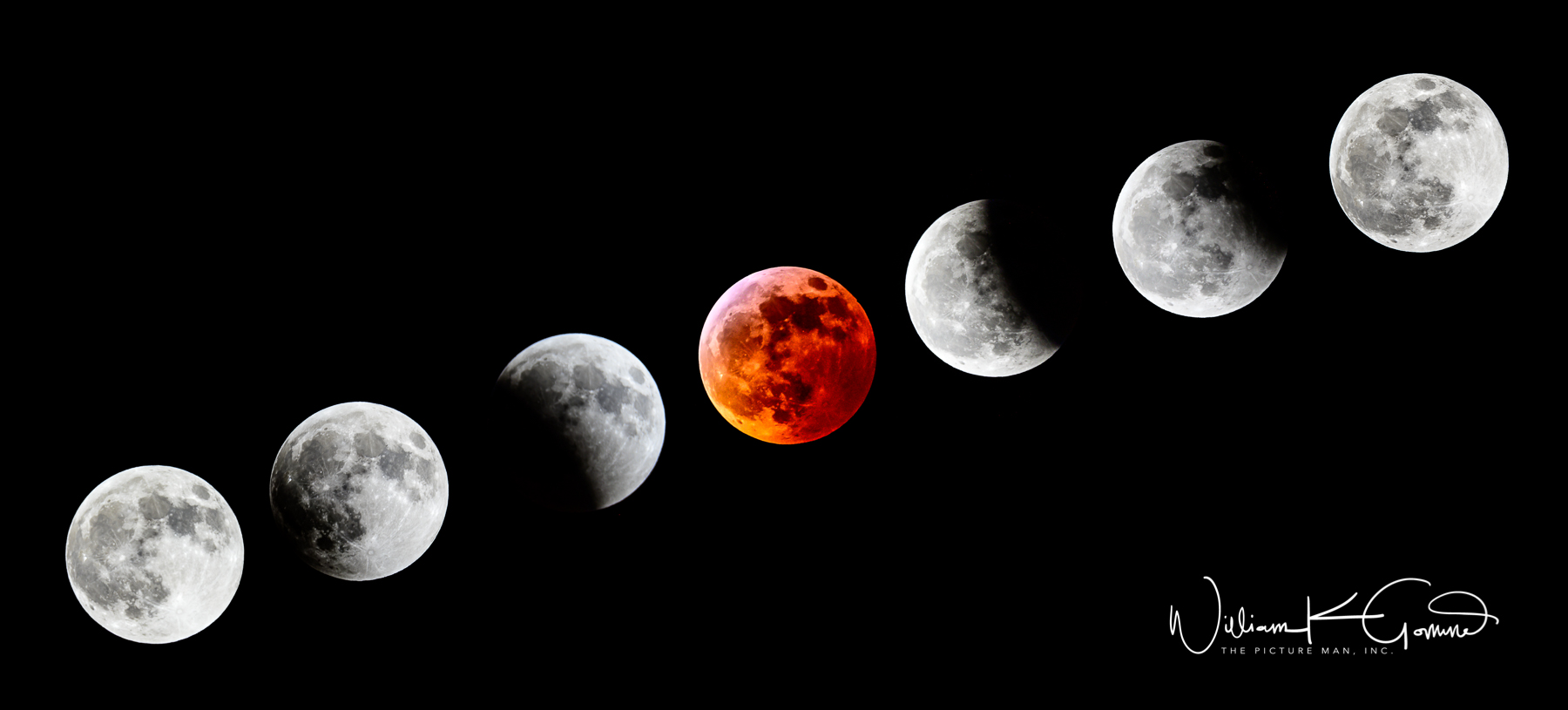While visiting family in Hawaii on January 31, 2018 we were able to observe a total lunar eclipse (see older post here. ) Being in Hawaii, the temperature was pleasant but the clouds obscured the event at times.
Last night we were back home in Aurora, IL and again there was a total lunar eclipse visible in our area. The skies were crystal clear so viewing was optimal. I started photographing at 8:30 pm, watched the progression thought the early morning until it was complete at 2:00 am! But January in the midwest means COLD and the temperature at full eclipse was around 2℉ and with a little breeze it was mighty cold. The gimbal head on the tripod stiffened up, the focus on the lens was tricky, and my fingers were burning at times.
Super Blood Wolf Moon-
A lunar eclipse occurs when the moon darkens as it travels through Earth’s shadow. Earth orbits the sun at a distance of about 93 million miles, while the moon is about 239,000 miles away from Earth. On January 20-21, the moon was at its closest point to Earth, otherwise known as perigee. The Earth’s shadow was three times as large as the moon at that time. When the moon is closest to the earth it is called a Super Moon. During a total lunar eclipse, the Earth blocks the light from the sun, giving the moon’s surface a red glow, which many refer to as a Blood Moon. Native Americans and colonial Europeans called January’s full moon the wolf moon because wolves in the region would start howling due to hunger in winter, according to The Old Farmer’s Almanac.
During last night’s eclipse the penumbral, partial, and total stages were viewable by the Americas for the first time in 19 years. This won’t happen again until 2058.
This composite image shows the full moon at 8:41 pm progressing through the eclipse. The total eclipse was photographed at 11:23 pm and back to the full moon at 1:52 am.

